
Researching barefoot shoes is going to yield some drastically differing viewpoints. Are barefoot shoes the answer to all that ails you? Or are they the devil reincarnate, a surefire way to destroy your foot health?
The truth is, it’s your feet that will save you, not the shoes. Yes I personally am 100% in the camp of “barefoot shoes or no shoes,” but not strengthening your feet when you switch to minimalist shoes is like wearing a cast for years and then not doing physical therapy when you take it off. Barefoot shoes will only benefit you if your feet can do what your old supportive shoes used to, and that requires MUSCLE. So if you are in search of a sustainable path to foot health then you need to be thinking about more than shoes.
In this post we cover 5 simple exercises for strengthening, mobilizing, and preparing your feet to be less reliant on supportive shoes. Whether you are a seasoned barefoot-er, actively transitioning to barefoot shoes, or just wanting to improve your foot health without making any big changes, these exercises are for you.
Short Foot
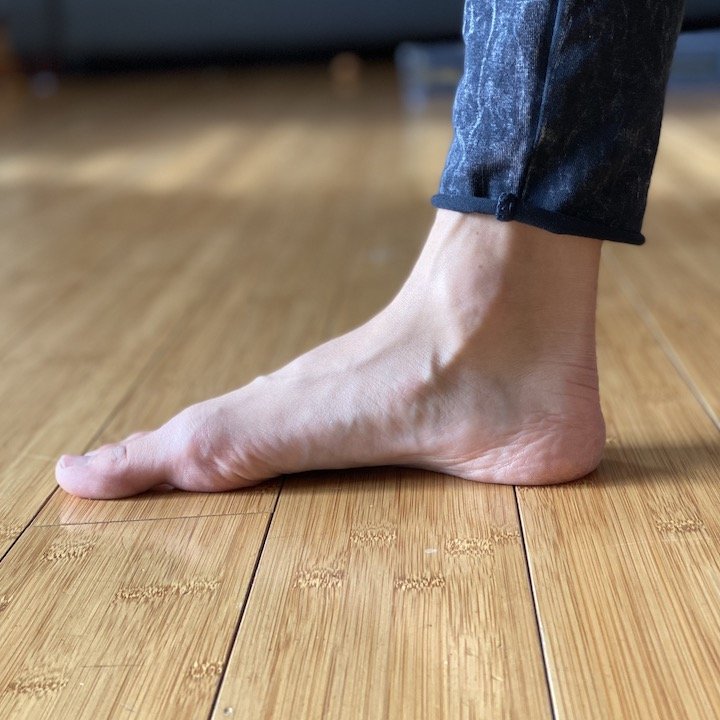

Short foot is an isometric exercise where you contract the arch of your foot by pressing your toes into the ground. When you do your foot should contract in the center and dome up, revealing an arch. This is a highly effective exercise for stabilizing the foot and is ground zero for function.
You might feel some cramping, and that’s ok! Hold the contraction for a few seconds and then repeat several times or until fatigue. Modify as needed, but with practice this exercise should become easier over time.
You can watch a video demonstration of the Short Foot exercise here.
Toe Spacers
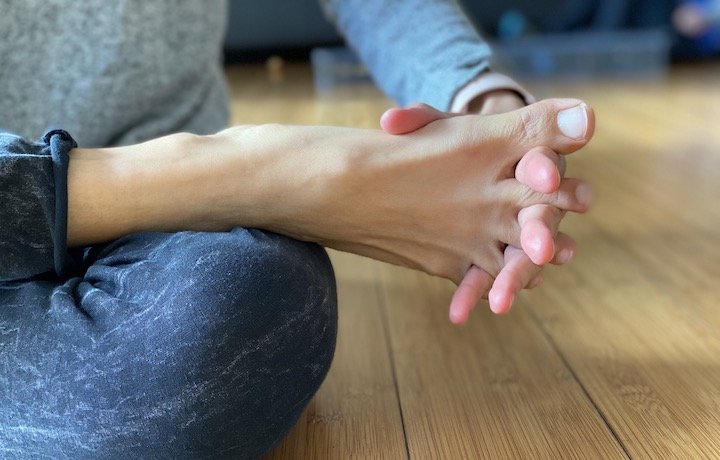
Helping your feet spread out can go a long way to reduce pain and increase stability. Many of us are walking around on effectively bound feet because the muscles are so tightly contracted as to make them immobile – thanks to our tight shoes + weak muscles. Interlacing your fingers between your toes (or trying to! They’ll get there eventually) is the easiest way to increase your foot mobility. Do it while watching TV or during a business meeting (they can’t see under the table…) and hold it for as long as feels comfortable. Aim for at least 30 seconds.
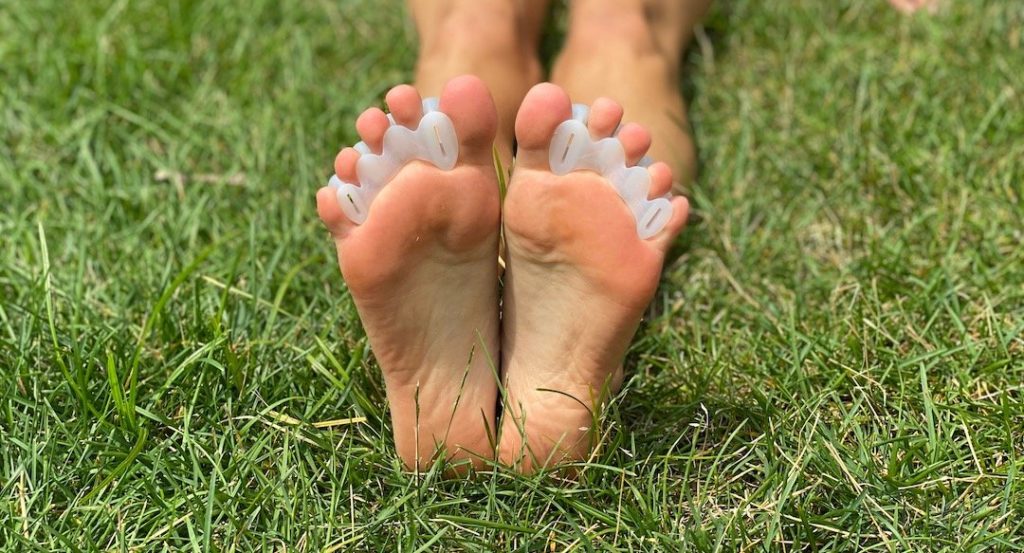
If you’re really wanting a better splay, consider Correct Toes. They are a passive way to spread your toes while you go about your business, and once you have worked your way up to it they can be worn all day in your shoes. Read my review of them here.
Toe-ga
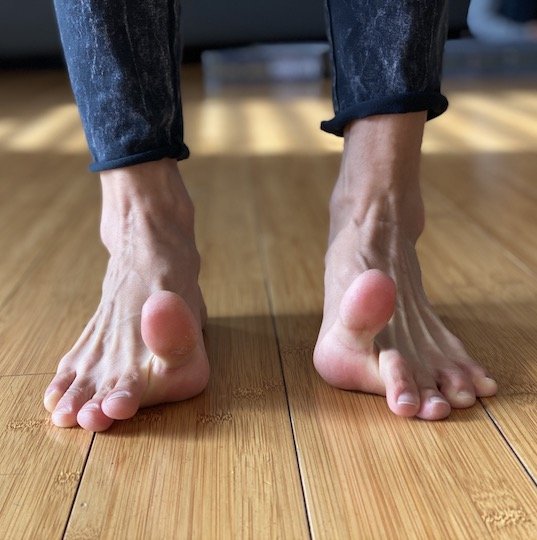

Oh toe-ga, how I love thee! Toe-ga is yoga for your toes, and can be done just about any time. I aim to do these exercises sporadically throughout the day, most days of the week. Eventually it becomes second nature to stretch and move your toes around, and your feet will thank you.
- Lift, spread, and reach your toes
- Raise only your big toe while keeping the others down, and then alternate (big toe down, other toes up)
- Raise each toe individually, then set them back down one at a time
- Add resistance by pressing your big toe into your finger
Don’t be discouraged if your toes don’t move yet. Doing the first exercise (toe spacers) and trying to move your toes is changing your feet, it just might take a little while before you can tell.
Roll Out Your Foot
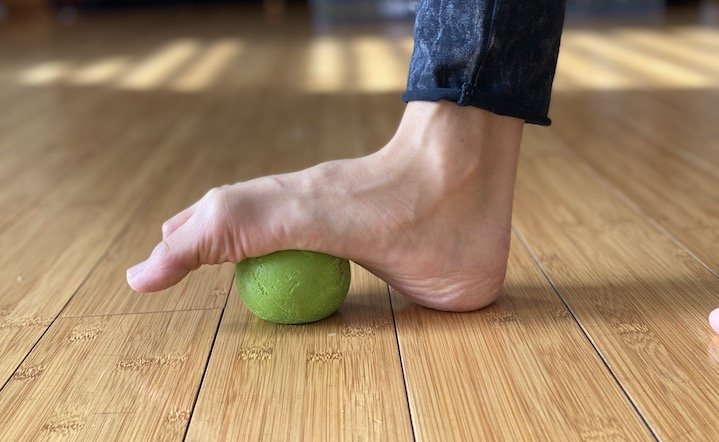
Rolling out your foot on a ball such as these Yoga Tune Up balls is an excellent way to break up dense tissue and wake up the nerves.
I try to apply as much pressure as I can (some pain is ok, but nothing that shoots or makes you grimace) and hold it until I feel a releasing sensation. You can press and hold on an especially dense area, and you can roll forward and back, and side to side. If your feet are very tight and painful that might be only a little pressure and it can be a while before you notice a change. Better to go light and often than hard and infrequently.
Besides rolling the foot out on a ball, you can also try stepping on virtually anything that is textured and bumpy. This can ease tension, work muscles that don’t get used often, and desensitize the bottoms of your feet. I have this Rox mat in front of my bathroom sink that I step on daily, and I also stand on this Naboso Mat while I work. In warmer weather I walk barefoot outside every day and that alone has improved my feet a lot.
Balance
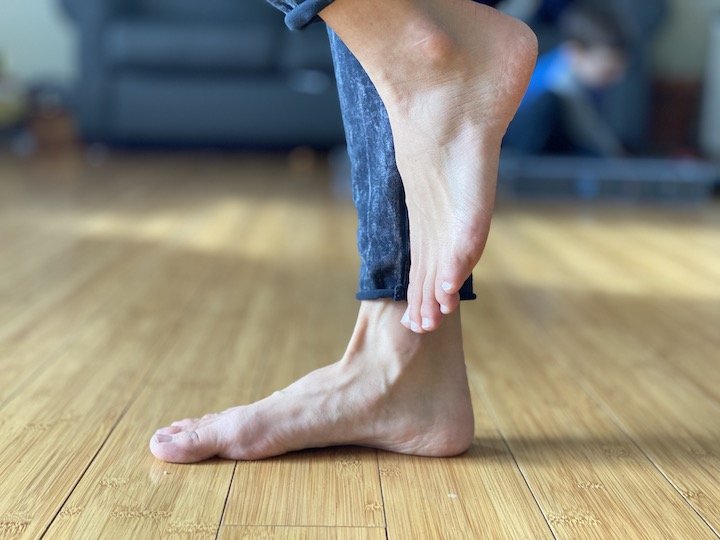
Yes, balancing is a foot exercise! I LOVE single leg balance work for bringing it all together, because your feet are connected to your core after all. I am very passionate about balance because I believe it has a huge impact on quality of life, especially as we age. A fall can be deadly, so I’d like to prepare my body today by honing my balance skills as much as possible. Here are a few things to keep in mind while balancing
- Keep your weight centered (don’t float forward)
- Keep your entire foot planted (your toes shouldn’t be popping up)
- Practice often
And here are a few ways to take your single leg balance to the next level
- Pass a kettlebell back and forth between your hands
- Lean forward and try to touch the floor (deadlift)
- Spread out like a star
- Walk on a balance beam
- Stand on a balance board
- Use a Mobo Board
- Add calf raises – calf strength is super important!
Extra Credit: Squat, Stand, or Sit on the Floor
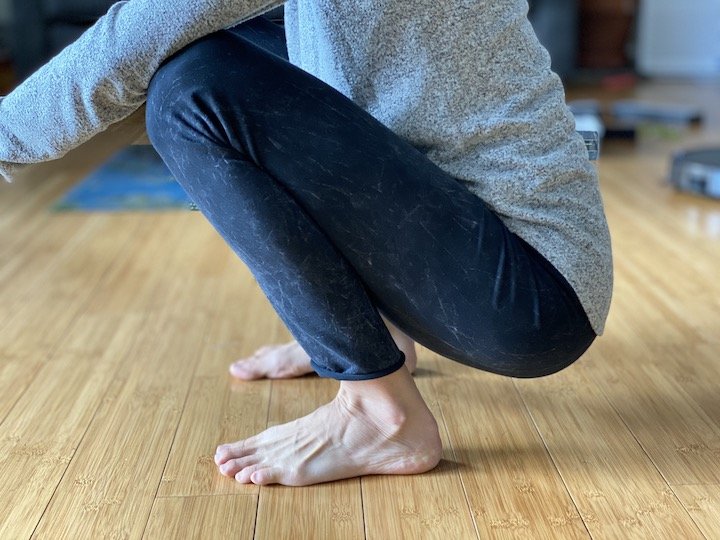
The truth is, how we sit, stand, and squat (or not squat) all affects our foot function. If you sit the majority of your day in one position it will inhibit your movement, so try to add a variety of poses to your life. Stand often, sit on the floor instead of in a chair, and squat regularly to keep all your parts limber!
For even further learning, check out this great free foot strengthening course from The Toe Spacer.
Conclusion
If a part of your body is weak, you can strengthen it. Feet are just as adaptable to exercise as any other part of your body, and you CAN change them. So add a few foot exercises into your life and see what a strong foundation can do for you. If you add in barefoot shoes too you are well on your way to happy feet!
Like Video? Watch me do the exercises here.
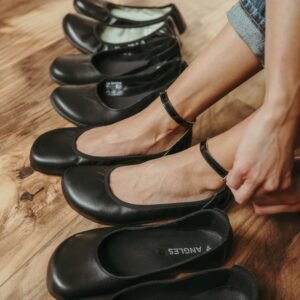
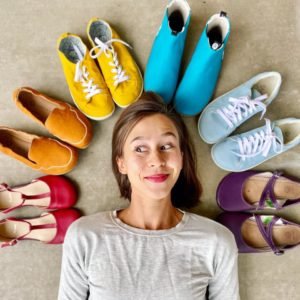

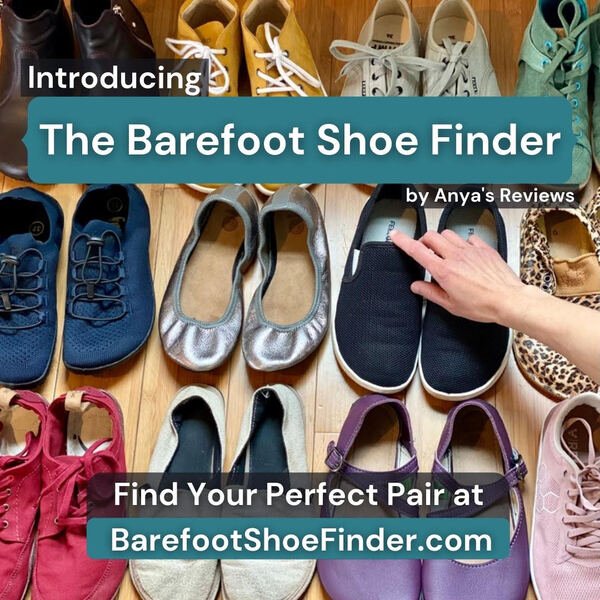
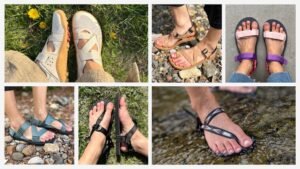
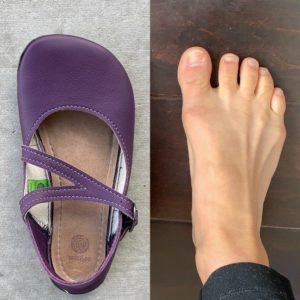

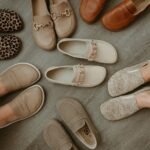
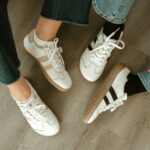

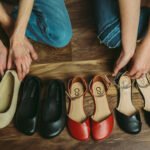


43 thoughts on “5 Simple Foot Exercises for Transitioning to Barefoot Shoes”
Thanks so much, Anya!! This is so helpful!!
You are welcome!
I love having all these exercises in one place. Thank you so much!! 💓
Hi Anya,
I have been struggling with hip pain and alignment issues this past year. I am working with a physical therapist and have learned a lot from reading your blog. I know you have read a lot and worked with a number of practitioners. One of my biggest challenges has been finding someone who can help address the real “root” of my issues. Do you have suggestions based on your experiences? I would greatly appreciate any advice/recommendations.
My first recommendation is always Gait Happens. They helped me and I have a lot of confidence in their ability to find root causes and address. They are just the best!
Thanks Anya! I will give them a try.
Hello Anya, I have followed you and read your posts and reviews for about a year now but I’m very sorry I don’t think I have ever said thank you. I have been moving to barefoot shoes and barefoot walking for almost 18 months. I certainly don’t have your flexibility, control or posture but I barefoot walk everyday and run when I am able. My feet look and feel much better and I believe my lower back issues are eased noticibly. I thank for you knowledge, support and inspiration ☺️
What a wonderful compliment! Thank you for taking the time to say this. I am so glad you are getting some positive benefits from the barefoot lifestyle.
Hi Anya,
I’m new to your site, but am finding it hugely informative and helpful.
I’ve seen EDS mentioned a few times (happily) and was looking for some guidance…I have EDS and Cranio-Cervical Instability. I recently bought a pair of Lems Primal 2 and have the Naboso Proprioceptive Insoles too. I also have the Tread Labs Pace insoles.
I find that walking around the house is nice, but a walk in the countryside is just too much, and the lack of support results in a great deal of pain on the soles of my feet. I’m unsure of whether to push through it or to “give up”. I.e is it doing more harm than good? I’m also doing your foot strengthening exercises.
The high-arches I have/overall, constant supination means I find myself in a bit of a grey area, and there’s not much tangible guidelines anywhere,
Any advice and guidance would be so appreciated 🙂
Thanks,
James
Hi James! Have you read the book Whole Body Barefoot? Katy Bowman does a good job laying out a recommended pacing, and she does not advise pushing through pain. Especially if you have EDS. Her other book, Diastasis Recti, is also really valuable for hypermobile people (don’t be thrown off by the name). Accommodations, such as thicker soles or swapping between your typical shoes and your new barefoot shoes might be important for the time being too. And finally, you might consider working with a practitioner, such as Gait Happens for some really personalized help. It doesn’t have to be an all or nothing approach, you can even use a supportive insole inside of a barefoot shoe (so you get the wide toe box). Basically, personalization is what it’s about if you have EDS. I wrote about this a little bit in this social media post: https://www.instagram.com/p/CReV4giqYIB/?utm_source=ig_web_copy_link
Hi Anya,
Thank you for your helpful site! I was diagnosed with Morton’s Neuroma in my left foot about a month ago. The acute pain has subsided (it came on strong after a Barre class), but when I walk barefoot on hard surfaces, it irritates the area. How long after your foot exercise plan were you able to walk on hard surfaces again? I’m doing PT and wearing supportive shoes. I don’t want to upset the Neuroma further, but I do want to be barefoot at some point. When can you tell the difference between irritating the Neuroma and strengthening the foot on hard surfaces?
Thank you!
Hi Brandi! Neuroma’s are outside my expertise, but I can point you to some resources. I usually check the Correct Toes website when I have questions about specific foot ailments, and found this on neuromas:
https://www.correcttoes.com/foot-help/foot-conditions-and-problems/neuroma/
And these exercises to help:
https://youtu.be/h2kaEOd3GcI
https://youtu.be/V9P8uMzmJIg
From what I understand, cushion will probably be your friend. I would be very careful to not aggravate the neuroma and slowly add texture – like walking barefoot on grass of wet sand – before trying hard flat surfaces.
Thank you so much Anya!
Thanks for this article! I’m feeling like my foot pain and ankle overpronation is caused by actually being barefoot over the course of covid. I’m totally getting the exercises, but do you have any suggestions for shoes in my case? Thanks in advance.
Hey! You could try a shoe with a little more cushion to start, the ones in this list are still flat and anatomically shaped: https://anyasreviews.com/best-barefoot-minimalist-shoe-brands-beginners/
And it’s not blasphemy to use a little support to get out of pain while you strengthen your feet. I used a 3/4 length Superfeet arch support in my barefoot shoes for a while as I built up strength and coordination.
I have a lacrosse ball for rolling knots in my back, but I never thought to use it on my feet. I have to say, I was shocked to find just how tight all those muscles are! I only did 2-3 minutes on each foot to get started. It’s ten minutes later now and they feel great. This is probably the most relaxed I can remember my feet being. I just wanted to say thanks for posting all of this info about feet and shoes. I just ordered my first pair of barefoot shoes and can’t wait to see how they feel.
PS: I can’t get over that toe-ga exercise. I think it’ll be a while before I can do that one. When I see you do it in the video, it looks impossible, like some sort of special effects.
Tony, that’s great news! It’s amazing how quickly you start seeing the benefits with a little foot TLC.
Hi Anya, thank you for all this information. I am very interested as my story sounds a lot like yours. My chiropractor’s recommendation is more support, preferably brooks. He says my arches are flattening out. I have struggled with tendinitis in my left ankle. Do you have any advice for me? I’m also not sure what shoes to land in at. Thank you!
Are you feeling uncomfortable in your shoes? If you’re not having pain, then I personally wouldn’t introduce arch support. Strengthening your feet and hips can work wonders to prevent issues down the road, but having flat feet isn’t an inherent problem by itself. Maybe look at some of these transitional brands that offer toe space, a zero drop sole, and a little more cushion than most barefoot shoes:
https://anyasreviews.com/best-barefoot-minimalist-shoe-brands-beginners/#transitional-barefoot-shoe-brands-for-beginners
Anya, I feel like I just entered a parallel universe! I’ve got narrow feet (can wear medium width that runs narrow) + bunions (not painful) + left foot 3/4″ longer than right, pronator. Floppy feet with falling arches. I’ve worn a custom orthotic for 20+ years. Been doing strengthening exercises, but terrified to let go of the orthotic. Checking out the transitional shoe brands…but I’d have to go without my orthotic in them?!
p.s. Is one of the beginner brands better for narrow-ish/bunioned feet than the others?
The beginner brands provide ample toe width, and most fit securely around the ankle so you don’t get flopping. I think you’ll have good luck with most on the list. Except maybe Saguaro, I would stay away from that one with your foot type.
With the transitional options you can keep the orthotic in (most have a removable insole you can swap out). But I would at least give it a try to go without it for short periods of time! Preferably in a sole you can feel the ground in, or just go totally barefoot sometimes. Considering your history, it’ll probably take some time. So don’t feel like you need to throw away the orthotic ASAP, just experiment a little and see how it goes.
Thank you, Anya for this review and the whole site. I’’m just starting my barefoot adventure and it’s really helpful. I’ve seen another post of yours showing how your feet changed by wearing barefoot shoes and doing exercises and it’s really impressive. Do you maybe now if those can help also with transverse flat feet? My arch is normal to high but I developed transverse ff during pregnancy and from what I read and hear everywhere, only specials insoles are solution (and I’d really like to avoid them). Do you maybe now someone who had this problem and exercises together with barefoot shoes helped?
Thanks a lot!
Hi there! Unfortunately I don’t know much about transverse flat feet. I would recommend seeing if you can find out from natural podiatrist such as Andy Bryant and Ray McClanahan from Northwest Foot and Ankle . They might be able to do a virtual consultation, or maybe can just point you to some resources and let you know if it can be treated naturally.